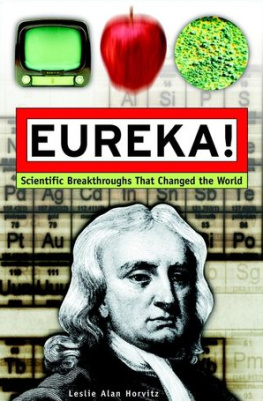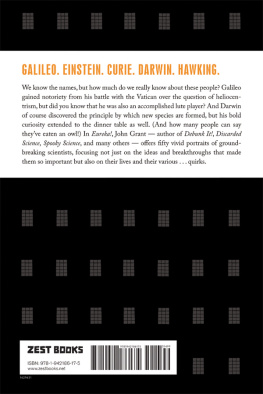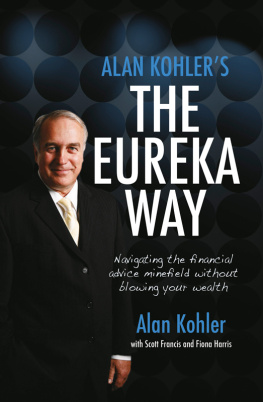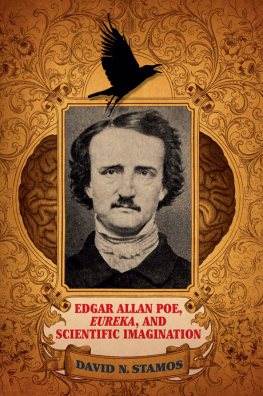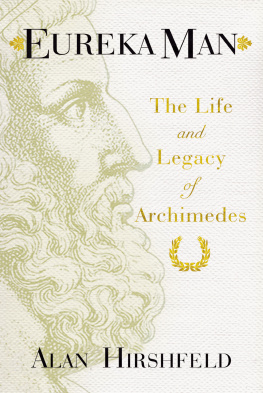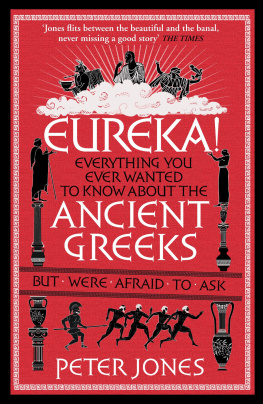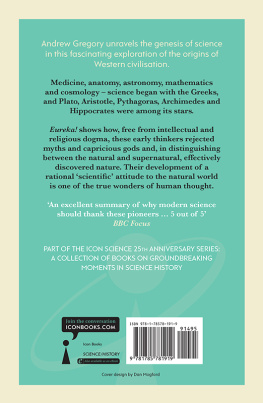CHAPTER 3 - A Visionary from Siberia
Dmitry Mendeleyev and the Invention of the Periodic Table
The riddle had baffled thousands of scientists throughout the Western world for centuries: If species could be organized into categories based on their distinctive characteristics, as the eighteenth century taxonomist Carl Linnaeus had done, could a similar order be found for the chemical elements? And further, could this order be made to apply even to elements that had yet to be discovered?
Although elements such as gold, silver, tin, copper, lead, and mercury have been known since antiquity, the first scientific discovery of an element didnt occur until 1669, when German alchemist Hennig Brand (d.c. 1692) isolated phosphorus from a urine sample. The discoveries of arsenic and cobalt followed shortly. The tide of new discoveries continued unabated through the eighteenth and nineteenth centuries as scientists identified platinum, nickel, hydrogen, nitrogen, oxygen, chlorine, manganese, tungsten, chromium, molybdenum, and titanium. By the middle of the nineteenth century, chemists had amassed a vast body of knowledge about the properties of elements and their compounds. They had managed to identify sixty-three elements and predicted a few others that hadnt been isolated. They even knew their atomic weightsalthough in some instances theyd gotten the weights wrong. (Atomic weights are based on the number ofprotons and neutrons in the atoms nucleus; the atomic number is based only on the number of protons.) So now chemists were in a position that they wouldnt have been in several years earlier1840, saysince they had enough elements in hand to attempt a rational arrangement of them. However, it was one thing to know that a rational organization of the elements was conceivable in principle, it was quite another to actually construct one.
The problem was that the elements had such decidedly different characteristics that it was hard to see whether they had very much in common at all. Some elements, like oxygen, hydrogen, chlorine, and nitrogen, were all gases; others, like mercury and bromine, were liquids under normal conditions; the rest were solids. There were some very hard metals, like platinum and iridium, and soft metals, like sodium and potassium. Lithium was a metal so light that it could float on water, whereas osmium was a metal twenty-two and a half times heavier than water. The metal mercury was not solid at all but a liquid. Gold, when exposed to air, never tarnished, but iron, on the other hand, rusted easily. Iodine simply sublimed and vanished into vapor. Some elements united with one atom of oxygen, others with two, three, or four atoms. A few, like potassium and fluorine, were too dangerous to handle without gloves. It was little wonder that scientists had come to grief trying to impose some kind of order. Clearly, only someone who was either very sure of himself or a fool would try to tackle a problem that had left any number of brilliant scientists flummoxed and embarrassed.
Attempts to devise a system of classification for the elements extend as far back as the early nineteenth century, when the English chemist and physicist John Dalton (17661844) advanced the theory that matter is composed of atoms of differing weights and that they also combine in simple ratios by weight. This theory, first proposed in 1803, is considered the foundation of modern physical science. Once chemists knew about atomic weights, they began to search for arithmetic connections between them with two goals in mind. For one thing, they were interested in finding out whether there was any likelihood that all elements were composed of a simple, common substance; for another, they wanted to see whether occasional similarities in their properties indicated similarities in structure. In 1817 the German chemist Johann Dobereiner (17801849) noticed that the atomic weight ofstron-tium fell midway between the weights of calcium and barium, elements possessing similar chemical properties. In 1829, after discovering the halogen triad composed ofchlorine, bromine, and iodine and the alkali metal triad composed of lithium, sodium, and potassium, he proposed that nature must be made up oftriads of elements. In his theory, known as the law of triads, the middle element had properties that were an average of the other two members if their order was governed by their atomic weight. The significance of the law of triads escaped most chemists of the day partly because of the still-limited number of known elements and partly because of the chemists inability to distinguish between atomic weights and molecular weights.
All the same, the new idea of triads became a popular area of study. Between 1829 and 1858 a number of scientists found that the types of chemical relationships Dobereiner had observed extended beyond the triad to larger groups. During this period fluorine was added to the halogen group. Oxygen, sulfur, selenium, and tellurium were grouped into another family, and nitrogen, phosphorus, arsenic, antimony, and bismuth were classified as yet another. Research was hampered, however, by the fact that accurate values of the elements were not always available.
If a periodic table is regarded as an ordering of the chemical elements demonstrating the similarity of chemical and physical properties, credit for the first periodic table probably should be given to a French geologist, A. E. Beguyer de Chancourtois. In 1862 de Chancourtois transcribed a list of the elements positioned on a cylinder in terms of increasing atomic weight. The cylinder was constructed so that closely related elements were lined up vertically. This led de Chancourtois to propose that the properties of the elements are the properties of numbers. De Chancourtois was first to recognize that elemental properties recur with every seven elementsthe recurrence is what is meant by periodicity. His chart had some major flaws, though, in that it included ions and compounds in addition to elements.
The next important development occurred in 1865, when an English chemist named John Newlands (18371898) made a valiant attempt to overcome the hurdles that earlier scientists had run into in establishing once and for all a relationship of the elements. In a paper titled the Law of Octaves, Newlands classified the fifty-six established elements into eleven groups based on similar physical properties, noting that many pairs of similar elements existed which differed by some multiple of eight in atomic weight. The law of octaves stated that every succeeding eighth element on the list displayed properties similar to the first. This observation prompted him to draw a comparison between the table of elements and the keyboard of a piano, whose eighty-eight keys are broken down into octaves, or periods, ofeight. The members of the same group of elements, he declared, stand to each other in the same relation as the extremities of one or more octaves in music. His theory was greeted with derision. The whole idea of comparing chemical elements to a piano struck his colleagues as too preposterous to take seriously.
Newlands was onto something, though. Chemists in France, Switzerland, and the United States had made similar observations in works published between 1860 and 1870. It was just that Newlands hadnt gone far enough. The task of corralling the elements into a coherent organization awaited someone with a fertile imagination and the courage to defy conventional wisdom. Thus was the stage set for a man who resembled an Old Testament prophet looking as though he had recently emerged from out of the wilderness to awaken the world from slumber. Only in this case the wilderness was Siberia and the prophets name was Dmitry Mendeleyev.
No one who ever laid eyes on him could forget him; he was outsized in every way. Some said he bore an unsettling resemblance to Rasputin. As he grew older, personal appearance became less and less significant to him. Every hair acted separate from the others, one startled observer wrote. He only cut his hair and trimmed his beard once a year. His slovenly appearance was misleading, though. He was a consummate and even obsessive scientist, a philosopher and a dreamer, but also a political agitator. While he believed it to be the glory of God to conceal a thing the order of the elements among themhe was also convinced that it was the honor of kings to search it out.

